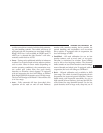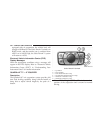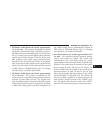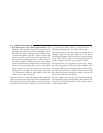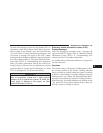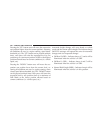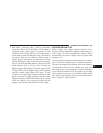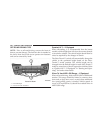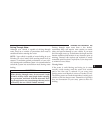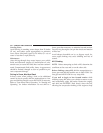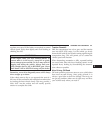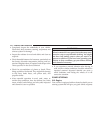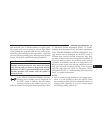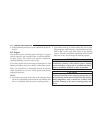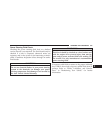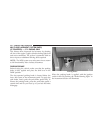
Driving Through Water
Although your vehicle is capable of driving through
water, there are a number of precautions that must be
considered before entering the water.
NOTE: Your vehicle is capable of water fording in up to
20 inches (51 cm) of water, while crossing small rivers or
streams. To maintain optimal performance of your vehi-
cle’s heating and ventilation system it is recommended to
switch the system into recirculation mode during water
fording.
CAUTION!
When driving through water, do not exceed 5 mph
(8 km/h). Always check water depth before entering,
as a precaution, and check all fluids afterward. Driv-
ing through water may cause damage that may not be
covered by the new vehicle limited warranty.
Driving through water more than a few inches/
centimeters deep will require extra caution to ensure
safety and prevent damage to your vehicle. If you must
drive through water, try to determine the depth and the
bottom condition (and location of any obstacles) prior to
entering. Proceed with caution and maintain a steady
controlled speed less than 5 mph (8 km/h) in deep water
to minimize wave effects.
Flowing Water
If the water is swift flowing and rising (as in storm
run-off), avoid crossing until the water level recedes
and/or the flow rate is reduced. If you must cross
flowing water avoid depths in excess of 9 inches (23 cm).
The flowing water can erode the streambed, causing your
vehicle to sink into deeper water. Determine exit point(s)
that are downstream of your entry point to allow for
drifting.
5
STARTING AND OPERATING 369



